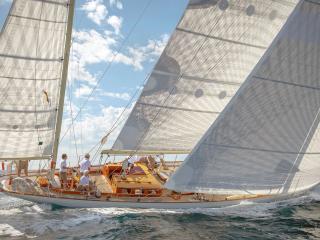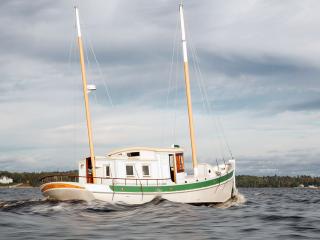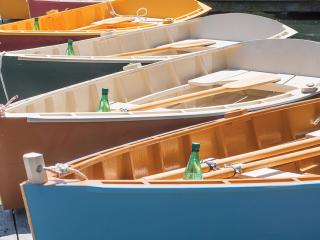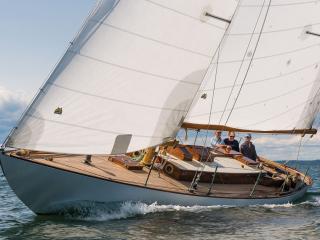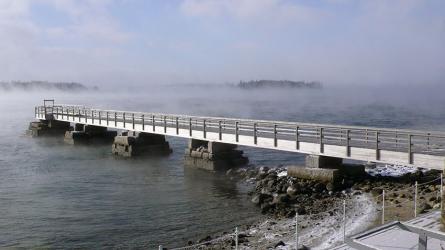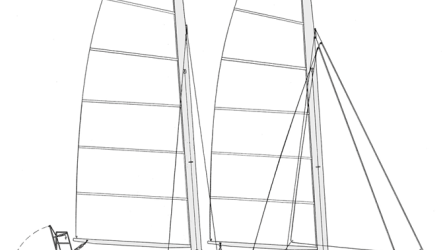January / February 2019
A Straight Edge, a Fair Curve, and a Sharp Point
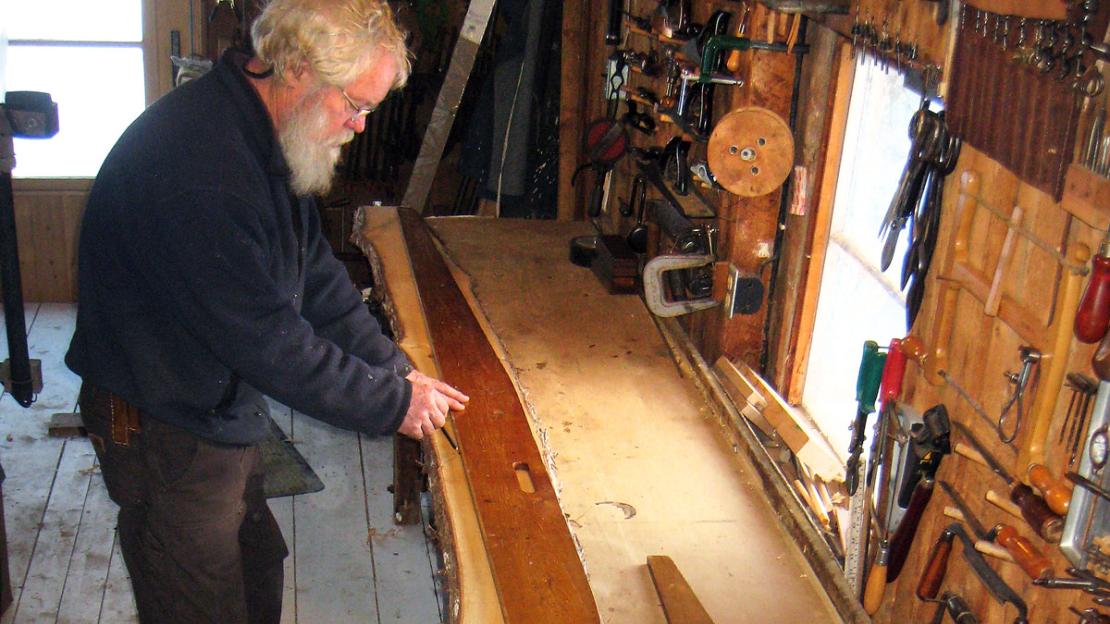
The author has made a variety of straightedges, from the 4′ hardwood one at right to a 12-footer, seen here in use, that has a glued-on hardwood edge. Both are 40 years old.
After 60 years of working with wood, I know of only one way to efficiently produce parts that fit nicely together, and that is to measure accurately, draw a line, then cut precisely to that line.
Almost all lines that define the shape of a boat are curves. Curves attract and hold our interest, and they soften the look of the hull or superstructure. They work with the flow of wind and water to give life to a boat. Being able to batten off a fair curve is an essential skill, but being able to mark a perfectly straight line equally as well as a fair curve is an essential part of boat design and construction.
Lofting, for example, depends on the accuracy of both straight lines and curves. Station lines, waterlines, buttocks, and diagonals are all curves in at least one view but straight lines in at least one other. Propeller shafts must be drawn straight, and the joining faces of the parts of the backbone and ballast only fit accurately if they, too, are straight. Accurate cuts in wood begin with accurate lines.
Making a Straightedge
A straight line is an unforgiving line. To be useful in any of the applications mentioned above, it must be accurate, and even a slight deviation from perfection can be picked up by the unaided eye. The first rule for a good straightedge, therefore, is that it is actually straight. For lines under a foot in length, the steel rule supplied with a combination square will serve. Any hardware store will stock 2', 3', and sometimes 4' steel or aluminum rules that can serve as straightedges for boatbuilding.
To read the rest of this article:
Click the button below to log into your Digital Issue Access account.
No digital access? Subscribe or upgrade to a WoodenBoat Digital Subscription and finish reading this article as well as every article we have published for the past 50+ years.
ACCESS TO EXPERIENCE
2-for-1 Print & Digital Subscription Offer
For this holiday season, WoodenBoat is offering our best buy one, get one deal ever. Subscribe with a print & digital subscription for $42.95, and we’ll give you a FREE GIFT SUBSCRIPTION to share with someone special.
1 YEAR SUBSCRIPTION (6 ISSUES)
PLUS ACCESS TO MORE THAN 300 DIGITAL BACK ISSUES
PRINT+DIGITAL $42.95
Subscribe
To read articles from previous issues, you can purchase the issue at The WoodenBoat Store link below.
 Purchase this issue from
Purchase this issue from
